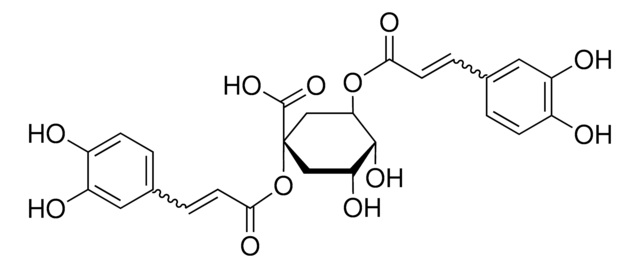A4471
Anti-ARTS antibody, Mouse monoclonal
clone ARTS51, purified from hybridoma cell culture
Synonym(s):
Anti-Apoptosis-Related Protein in the TGF-β Signaling Pathway, Monoclonal Anti-ARTS antibody produced in mouse
About This Item
Recommended Products
biological source
mouse
conjugate
unconjugated
antibody form
purified immunoglobulin
antibody product type
primary antibodies
clone
ARTS51, monoclonal
form
buffered aqueous solution
mol wt
antigen 32 kDa
species reactivity
human
concentration
~2 mg/mL
technique(s)
immunocytochemistry: suitable
indirect ELISA: suitable
microarray: suitable
western blot: 0.5-1 μg/mL using a whole extract of transfected 293T (human embryonal kidney) cells expressing ARTS
isotype
IgG2b
shipped in
dry ice
storage temp.
−20°C
target post-translational modification
unmodified
Gene Information
human ... SEPT4(5414)
General description
Specificity
This monoclonal Ab is the only currently commercially available antibody directed against the unique C-terminus of ARTS, that can distinguish betweenARTS ( the pro-apoptotic, tumor suppressor, specific XIAP- antagonist) and Sept4_i1 (H5,PNUTL), which is the other product of the SEPT4 gene.
Immunogen
Application
Physical form
Disclaimer
Not finding the right product?
Try our Product Selector Tool.
Storage Class Code
12 - Non Combustible Liquids
WGK
nwg
Flash Point(F)
Not applicable
Flash Point(C)
Not applicable
Certificates of Analysis (COA)
Search for Certificates of Analysis (COA) by entering the products Lot/Batch Number. Lot and Batch Numbers can be found on a product’s label following the words ‘Lot’ or ‘Batch’.
Already Own This Product?
Find documentation for the products that you have recently purchased in the Document Library.
Our team of scientists has experience in all areas of research including Life Science, Material Science, Chemical Synthesis, Chromatography, Analytical and many others.
Contact Technical Service







